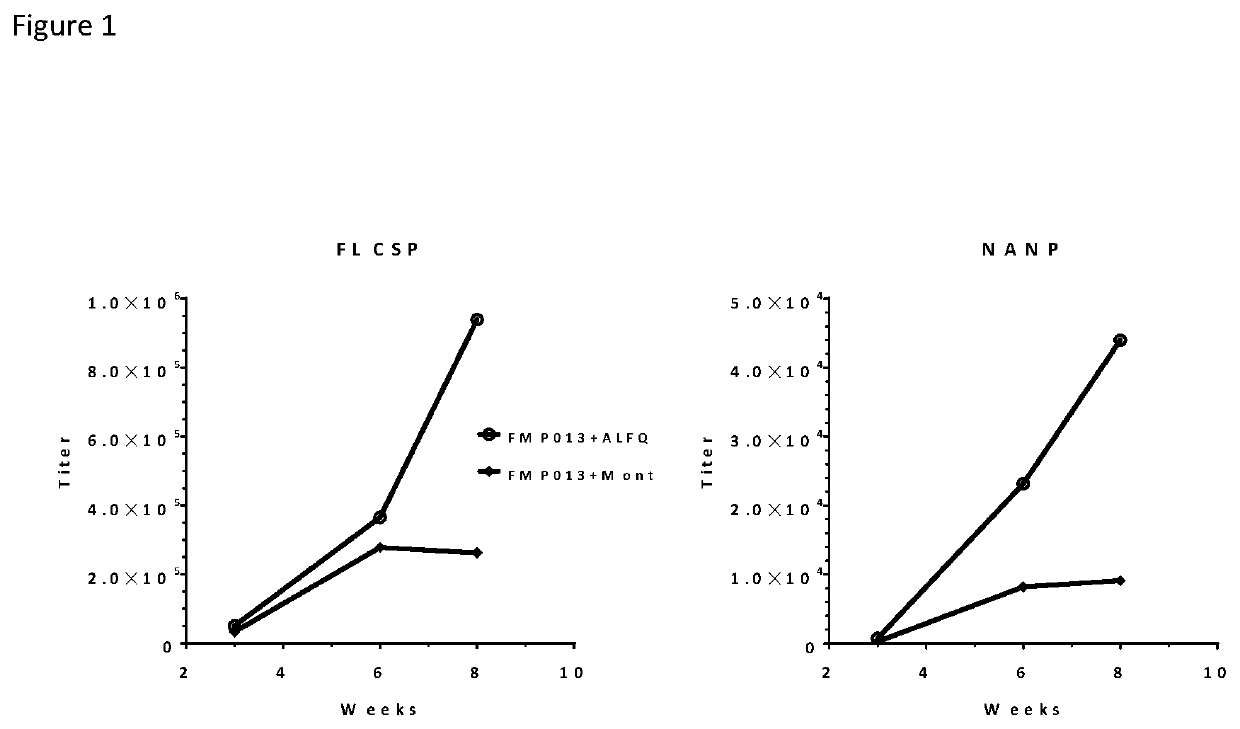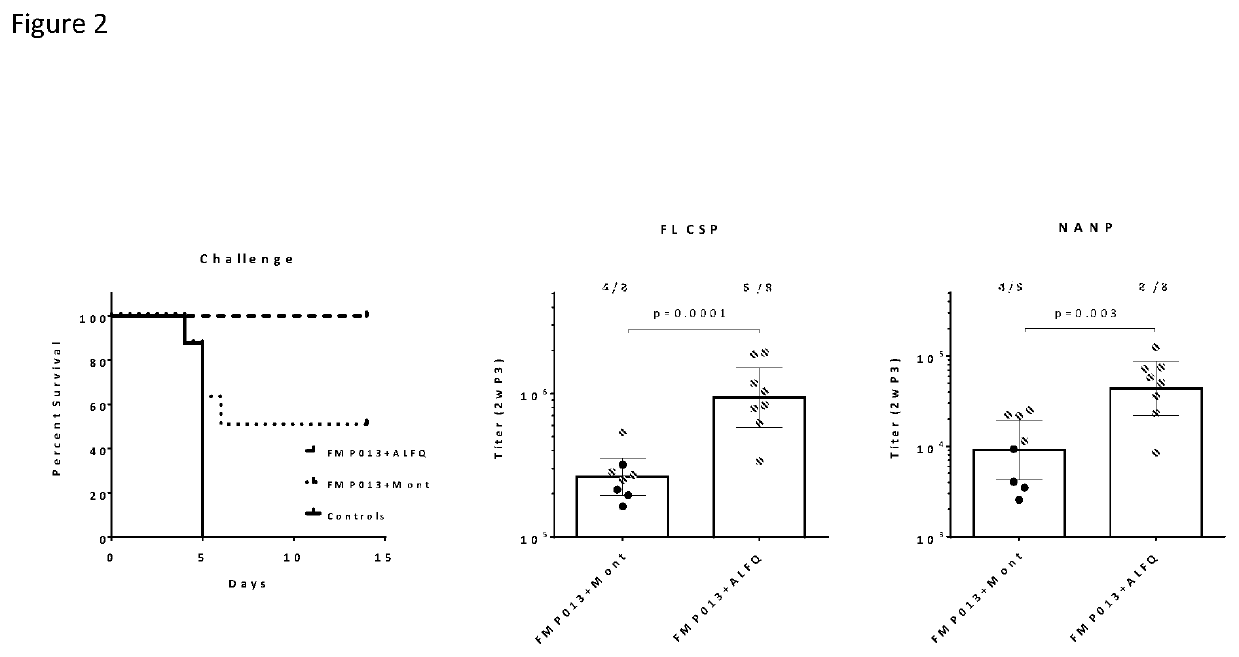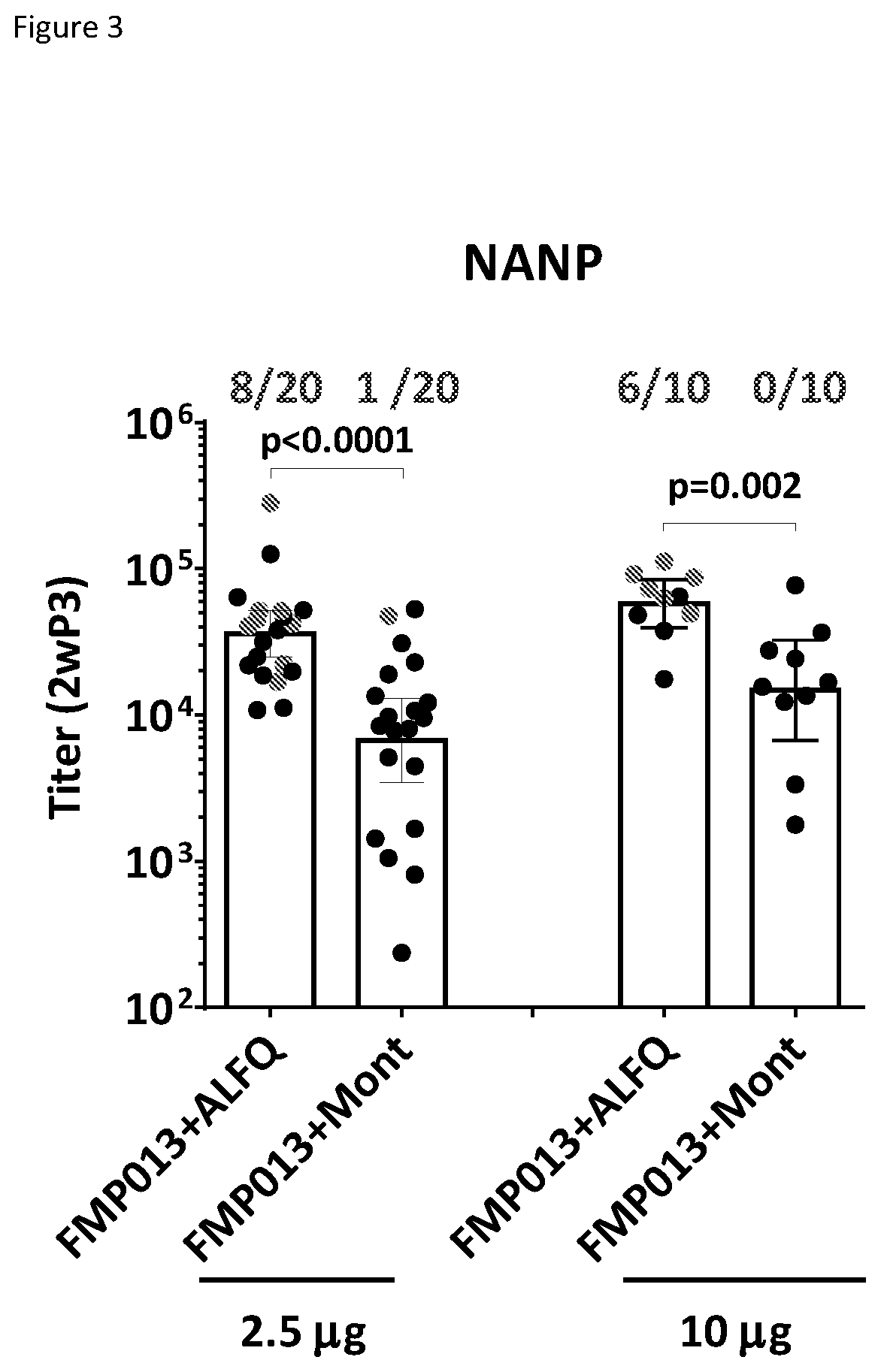Compositions and Methods for Vaccine Delivery
a vaccine and composition technology, applied in the field of compositions and methods for vaccine delivery, can solve the problems of inconsistent protection of early vaccines, and the inability to translate promising preclinical leads in mice to the development of human vaccines
- Summary
- Abstract
- Description
- Claims
- Application Information
AI Technical Summary
Benefits of technology
Problems solved by technology
Method used
Image
Examples
example 1
[0071]Female C57BL / 6 mice were immunized intramuscularly with 50 μl of the vaccines by injection in alternate rear thighs at 0, 3, and 6 weeks. The animals were bled three weeks after the first and second immunizations and two weeks after the third dose. Each dose of the vaccine contained 2.5 μg of FMP013 formulated with ALFQ or a commercially available oil-based adjuvant Montanide ISA 720 VG (Montanide) as a control. Montanide was used as a benchmark for immunogenicity as is known to induce very high antibody response in mice when combined with investigational malaria vaccines, and has also been used in human clinical trials. Following each of 3 vaccinations in C57BL / 6 mice (n=8), mice were monitored 1-2 times daily and showed no local and systemic adverse reactions and no skin abnormalities, weight loss or lethargy. ELISA conducted against the full-length CSP antigen (FL CSP) and the NANP repeat peptide showed that Montanide group mice sero-converted all mice against FL CSP and 7 / ...
example 2
[0072]To evaluate the protective efficacy, the vaccinated mice were challenged 2 weeks after the final (third) dose with intravenous injection of 3000 transgenic strain P. berghei (Tr-Pb) sporozoites. Parasitemia was observed in all naive control mice by day 5 (FIG. 2 left panel). Montanide showed 50% sterile protection (4 / 8), while ALFQ protected 100% of mice (8 / 8). The magnitude of NANP titers correlated with protection status of challenged mice, as has been observed in controlled human malaria infection (CHMI). Significant differences between ALFQ and Montanide adjuvanted FMP013 were determined by two-tailed t tests for titers on the day before challenge. The ALFQ group FL titer was 4-fold higher than Montanide (P=0.0001) after the third dose (FIG. 2 middle). The NANP titer profiles for both vaccine formulations (FIG. 2 right) were similar to the FL profiles. ALFQ NANP titers were 5-fold higher than Montanide (P=0.03) post-third dose. Thus, FMP013 was able to induce higher antibo...
example 3
[0073]ALFQ and Montanide adjuvants were further compared in two subsequent challenge studies with a larger mouse sample size, which allowed for more statistical power to discern differences in protection between ALFQ and Montanide adjuvanted FMP013. In both studies, three doses of 2.5 μg FMP013 (n=10) were tested and the combined NANP and protection data was analyzed (FIG. 3, left bars). ALFQ showed higher NANP response (P<0.0001) and higher protection (40% vs. 5%, P=0.02, Fisher's exact test) compared to Montanide (FIG. 3). In one of the studies, ALFQ and Montanide were compared at 10 μg FMP013 dose (n=10). At this elevated dose, higher NANP titers (P=0.002) and protection (60% vs. 0%, P=0.01, Fisher's exact test) were again observed in the ALFQ group compared to Montanide (FIG. 4, right bars). FMP013 with ALFQ reproducibly showed higher titers, better boosting and higher protection than Montanide.
PUM
 Login to View More
Login to View More Abstract
Description
Claims
Application Information
 Login to View More
Login to View More - R&D
- Intellectual Property
- Life Sciences
- Materials
- Tech Scout
- Unparalleled Data Quality
- Higher Quality Content
- 60% Fewer Hallucinations
Browse by: Latest US Patents, China's latest patents, Technical Efficacy Thesaurus, Application Domain, Technology Topic, Popular Technical Reports.
© 2025 PatSnap. All rights reserved.Legal|Privacy policy|Modern Slavery Act Transparency Statement|Sitemap|About US| Contact US: help@patsnap.com



